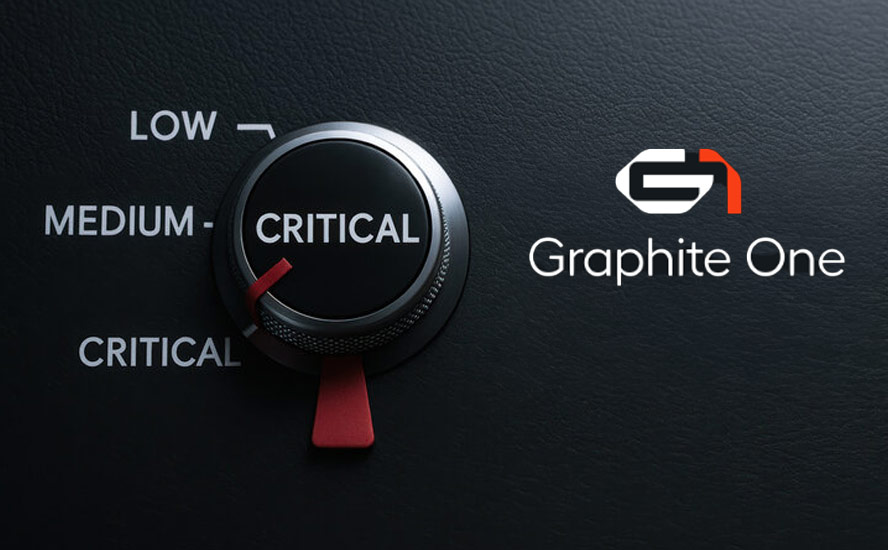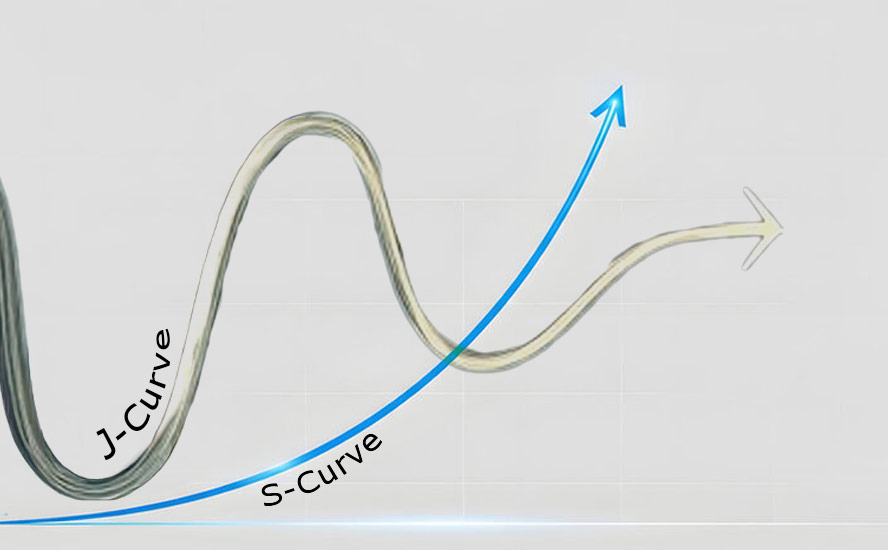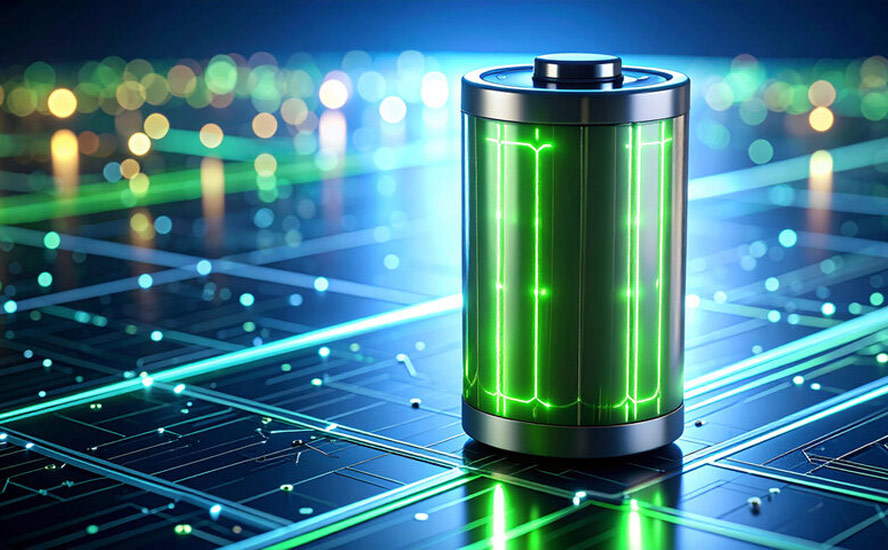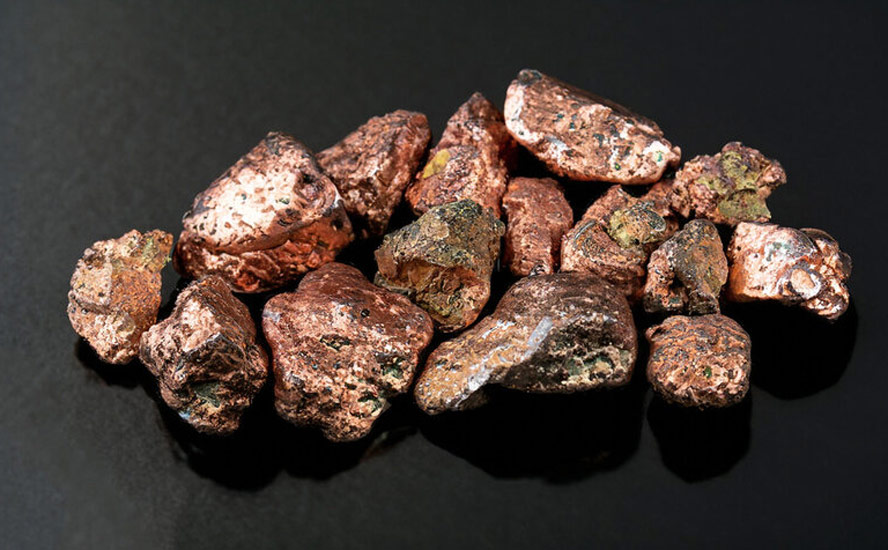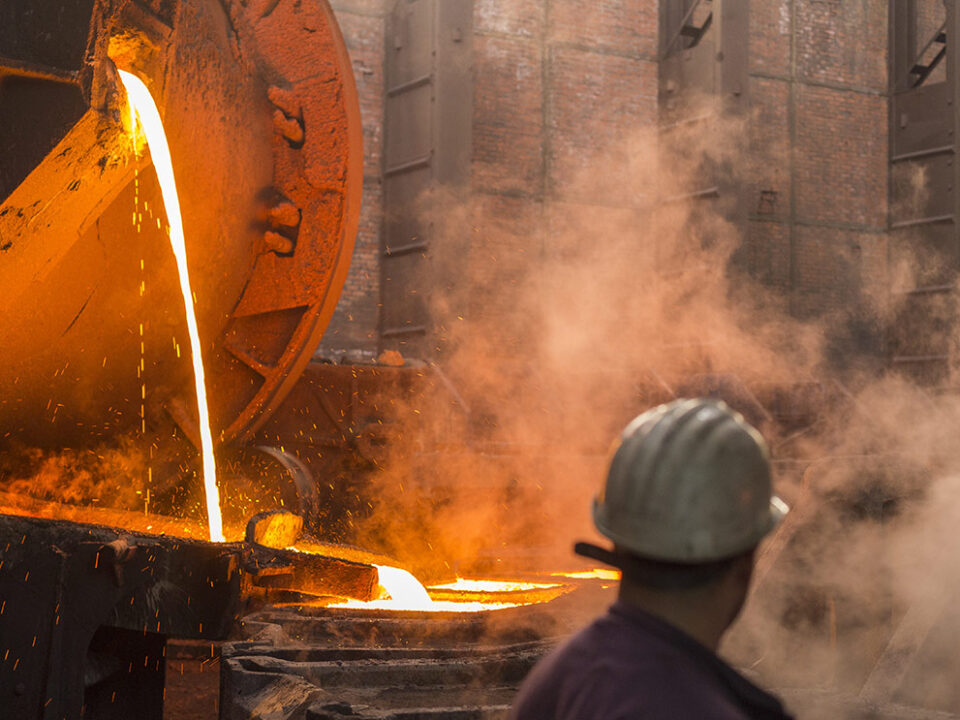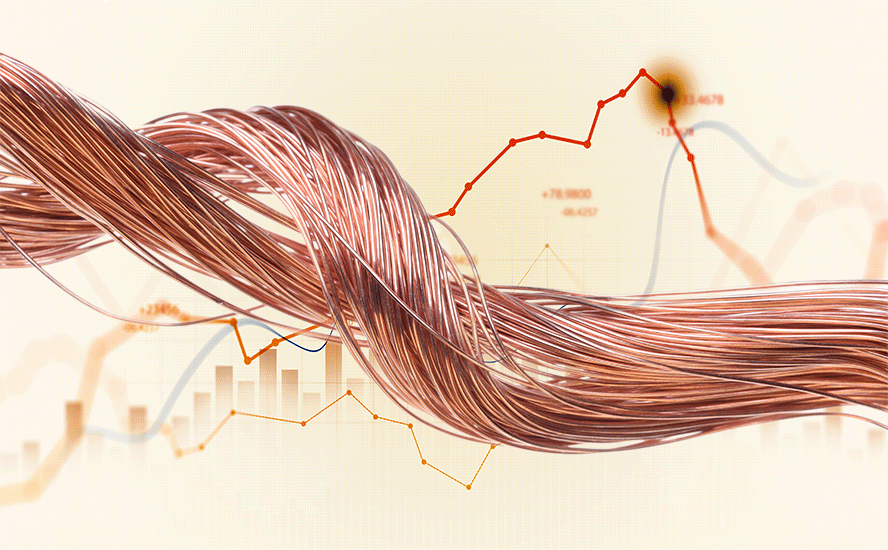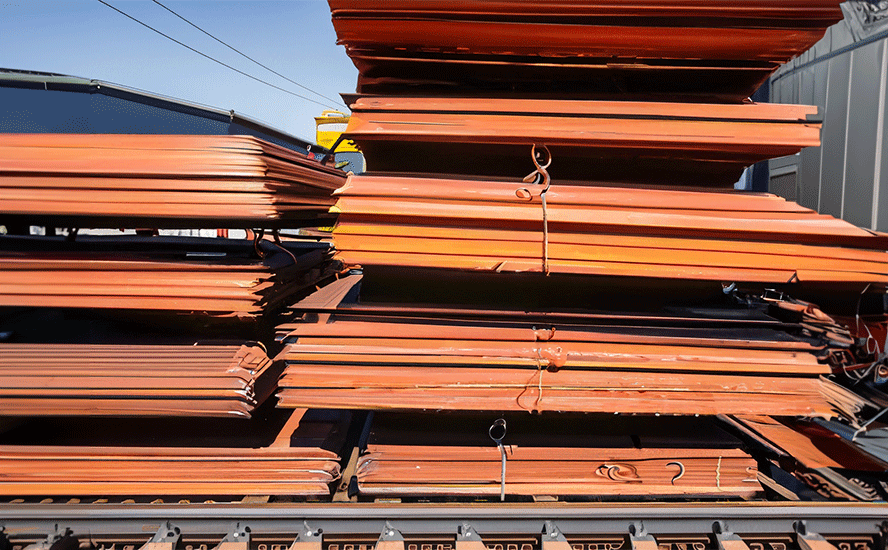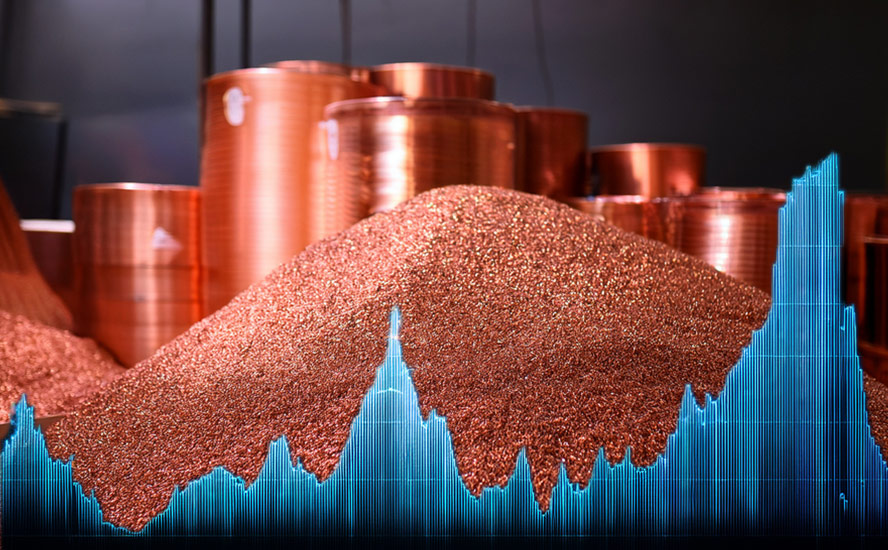Import ban on goods made with Chinese slave labor extended to electric car batteries – Richard Mills
2023.08.27
US auto manufacturers that source their components from a region in China accused of slave labor and other human rights violations, had better audit their supply chains, or they could see shipments detained at the border.
According to a document obtained by Reuters, electric-vehicle batteries and other car parts are the latest products to be put under scrutiny, as part of Washington’s efforts to eliminate US links to forced labor in Chinese supply chains.
A U.S. Custom and Border Patrol (CBP) spokesperson said the document was updated between April and June to include batteries, tires, aluminum and steel.
The original documentation, called the Uyghur Forced Labor Prevention Act, banned imports linked to China’s Xinjiang region unless the importer can prove that goods were made without forced labor. It focused mainly on solar panels, tomatoes and cotton clothing.
But according to the Aug. 17 Reuters story,
The stepped-up focus on automakers follows a study by Britain’s Sheffield Hallam University published in December that said every major automaker has exposure to products made with forced labor in Xinjiang…
Increased inspection of products destined for auto assembly plants by U.S. Customs and Border Protection (CBP) could signal difficult times ahead for automakers who will need solid proof that their supply chains are free of links to a region where the U.S. believes Chinese authorities have established labor camps for Uyghurs and other Muslim minority groups…
Uyghur Forced Labor Prevention Act
About 12 million Uyghurs live in the Xinjiang Uyghur Autonomous Region. The Uyghurs speak their own language and see themselves as culturally and ethnically close to central Asian nations. Recent decades have seen a mass migration of ethnic majority Han Chinese to the region. Media reports say this has been orchestrated by Beijing to dilute the Uyghur population.
Among a catalogue of human rights abuses detailed below, China is accused of targeting Muslim religious figures, banning religious practices and destroying mosques.
Furthermore, concerns have been voiced that much of the cotton picked in Xinjiang is by forced labor, and in 2021 some Western brands removed Xinjiang cotton from their supply chains.
According to the U.S. State Department, the departments of commerce, homeland security and the treasury issued a business advisory to caution businesses about the risks of supply chain links to entities that engage in human rights abuses, including forced labor, in Xinjiang and elsewhere in China.
June 21 marks one year since the Department of Homeland Security began enforcing the import control requirements of the Uyghur Forced Labor Prevention Act (UFLPA). According to CSIS, In the first year of enforcement, CBP detained more than $1.3 billion worth of products at the border under the UFLPA. At least 679 shipments have been denied entry thus far, while nearly 2,000 are still being held for what can be a lengthy review process to determine eligibility.
Hell for Muslim minorities
The allegations against China go far beyond slave labor in Xinjiang. According to the U.S. State Department,
The Chinese Communist Party is waging a targeted campaign against Uyghur women, men, and children, and members of other Turkic Muslim minority groups in Xinjiang, China. Documented human rights abuses include coercive population control methods, forced labor, arbitrary detention in internment camps, torture, physical and sexual abuse, mass surveillance, family separation, and repression of cultural and religious expression.
Last September, The Guardian ran a story about a report by the UN human rights commissioner documenting “serious human rights violations” against Uyghur Muslims in Xinjiang province that could amount to crimes against humanity.
The commissioner’s office found credible evidence of rape and torture, including allegations of people being strapped by their hands and feet to a chair and beaten, waterboarding, and long stretches of solitary confinement.
The Chinese Communist Party (CCP) is believed to have detained more than a million Uyghurs, along with other minority Muslim groups over the past few years, in a large network of “re-education camps”, and sentenced hundreds of thousands to prison terms.
According to the State Department, the CCP routinely violates freedom of religion, by targeting everyday expression of Islamic belief such as owning a Quran, praying, avoiding alcohol or tobacco, fasting during Ramadan, as well as secular aspects of non-Chinese culture such as Uyghur language and music.
Among the most disturbing allegations are those relating to population control. The UN report found the Chinese government linked frequency of child births with religious extremism, which it used to justify violations of reproductive rights, including forced abortions, involuntary birth control and sterilization.
China denies all allegations of human rights abuses in Xinjiang, saying that the crackdown is necessary to prevent terrorism and to root out Uyghur militants, who it insists are waging a violent campaign for an independent state. It says the camps are an effective tool for re-educating inmates, and that people are free to join and leave.
During the 1990s, anti-Han and separatist sentiment rose in Xinjiang, culminating in 2009 when about 200 people died in a series of violent riots. The Chinese blame the deaths on the Uyghurs.
An important tool in the state’s toolbox for crushing dissent has been a lack of privacy. According to the BBC,
Xinjiang is now covered by a pervasive network of surveillance, including police, checkpoints, and cameras that scan everything from number plates to individual faces. According to Human Rights Watch, police are also using a mobile app to monitor people’s behaviour, such as how much electricity they are using and how often they use their front door…
Many appear to have been targeted for their mobile phone use, for listening to “illegal lectures” or not using their phones enough, which is regarded as a sign the user is trying to evade digital surveillance.
Effects on graphite
Let’s return to the UK study in December that said every major automaker has exposure to products made with forced labor in Xinjiang. If true, it would mean a much higher level of scrutiny for automakers and their chains of supply, including electric-vehicle batteries, under the Uyghur Forced Labor Prevention Act.
According to Human Rights Watch, the research details Xinjiang’s role in the production of metals critical to auto manufacturing, including aluminum, steel, and copper, as well as the region’s manufacturing of batteries, tires, and other car parts.
Car makers with suppliers in Xinjiang risk having their vehicles or parts seized at the border by US customs officials.
In April, Voice of America reported that the Senate Finance Committee is investigating auto manufacturers and suppliers for potential links to forced labor in Xinjiang, where Uyghurs and other ethnic minorities are allegedly being coerced into working in factories.
Letters asking how Chinese supply chains are overseen went to companies including Ford, Honda, General Motors, Mercedes-Benz, Toyota, Tesla and Volkswagen, as well as numerous major auto supply companies, VOA said.
For a while, we have talked about graphite being at the forefront of the global race toward vehicle electrification. At AOTH, we believe this is the mineral to watch, should Sino-US relations worsen.
The reason is simple: vehicle electrification doesn’t happen without graphite. It’s the only material in the world that conducts electricity other than metals, and the only one that can be used in the anodes of EV batteries.
In fact, it is the largest component in batteries by weight, constituting 45% or more of the cell. There is nearly 4x more graphite feedstock consumed in each lithium-ion cell than lithium and 9x more than cobalt. An average plug-in EV contains up to 70 kg of graphite.
Where are North America’s battery anode plants being built?
The battery anode material — known as spherical graphite — is manufactured from either flake graphite concentrates produced from mineral deposits, or from synthetic/artificial graphite. Automakers prefer the former because natural graphite is cheaper and environmentally friendly, but only flake graphite upgraded to 99.95% purity can be used in EV batteries.
Therefore, a reliable EV supply chain not only requires domestic production of graphite, but also the capacity to process the raw material into battery-grade, which is why a fully integrated supply chain, for any major auto market, is so important.
Lately there has been reason to question China’s commitment to supplying foreign buyers with certain strategic metals. In July, China announced that it will impose export restrictions on gallium and germanium, two metals key to the manufacturing of semiconductors, electric vehicles and telecommunications equipment.
The new regulations require exporters to seek a license to ship gallium and germanium compounds starting Aug. 1, China’s commerce ministry said in a statement.
This is not the first time that China has put the clamps on exports of minerals whose supply chain it dominates.
In 2010, China restricted exports of its rare earths to Japan following a territorial dispute. While China eventually was found to have violated World Trade Organization rules, the episode made Japan, the European Union and the US realize it’s risky to rely on China for key minerals.
During the Trump-era trade war between the US and China, Beijing again held up the threat of cutting the United States off from rare earth oxides needed in several high-tech and defense-related applications.
Hence, the critical minerals strategies and collaborations between Western nations today are mostly aimed to “de-risk” from China.
When China’s ability to use its economic muscle to dominate batteries, EVs or semiconductors, is combined with allegations of slave labor to make auto parts in Xinjiang province, China’s electric vehicle supply chain starts to look very shaky.
It’s also a stark reminder of how vulnerable the United States is when it comes to imported raw materials needed for the domestic manufacture of EVs.
China is by far the biggest graphite producer at about 80% of global production. It also controls almost all graphite processing, establishing itself as a dominant player in every stage of the supply chain.
After China, the next leading producers are Mozambique, Brazil, Madagascar, Canada and India. The US currently produces no graphite, and therefore must rely solely on imports to satisfy domestic demand.
According to the USGS, in 2022 the US imported 82,000 tonnes of natural graphite, of which 77% was flake and high purity. The top importers were China (33%), Mexico (18%), Canada (17%) and Madagascar (10%).

But since EV batteries require run-of-mine graphite to go through purification and coating, a process controlled by China, the US was not 33% dependent on China for its battery-grade graphite, but 100%. This is a precarious position to be in should the country want to stay in contention for EV dominance.
How about number 2 producer Mozambique? In a previous article we discussed the perils of being reliant on a country whose graphite-producing northern province, Cabo Delgado, has been wracked by political violence.
We learned that Syrah Resources was one of the mining companies whose operations were affected by armed conflict there. In June 2022, Club of Mozambique reported the supply chain was temporarily suspended due to attacks close to the mine road. In November, the Balama mine had to evacuated due to violence in the area.
Let’s say you’re Volkswagen. Or GM. Are you really willing to bet your “just in time” auto parts supply chain on terrorism-prone Mozambique? Where Islamic State has been mounting attacks, including beheadings and kidnapping of women, and where Russia’s powerful infamous Wagner Group is thought to be involved?
Solar panels and polysilicon
If the big automakers can’t find a safe, reliable source of graphite, and other auto parts, in the vast quantities required for the continuing ramp-up in electric vehicle production, they risk having their supply chains yanked by protectionist measures.
This is precisely what happened to solar panels and polysilicon, a key raw material in the solar photovoltaic (PV) supply chain.
Both solar energy and battery-powered electric vehicles are critical industries in the Biden administration’s push to wean the US from dependence on fossil fuels and to combat climate change. (Reuters, Aug. 17 2023)
Reuters notes how a policy intended to heap pressure on Beijing over its Uyghur detention camps in Xinjiang risks slowing the Biden administration’s efforts to decarbonize the US power sector.
Last June, the Uyghur Forced Labor Prevention Act aimed at preventing imports from China’s Xiniang region over slave labor concerns went into effect. Between June 21 and Oct. 25, just over a thousand shipments of Chinese solar energy components piled up at US ports.
The effect of the import ban was to slow solar installations in the United States by 23% in the third quarter of 2022, with nearly 23 gigawatts of solar project delayed, according to the American Clean Power Association. For the whole year, installation of large solar energy facilities for utilities dropped 31%.
Pressure from the industry led to a thaw in the freezing of shipments earlier this year. President Biden also temporarily waived tariffs on photovoltaic cells and modules from southeast Asia alleged to be circumventing tariffs on China. According to S&P Global Market Intelligence, US solar imports jumped 87% in the first quarter of 2023, hitting a new high.
But that wasn’t the end of the issue.
In April, the US House of Representatives voted to reinstate tariffs on Thailand, Vietnam, Malaysia and Cambodia, a measure aimed at boosting solar installations in the United States. Reuters notes that panels from the four nations, which host manufacturing facilities owned by Chinese companies, account for about 80% of US supplies.
The legislation then moved to the Senate, where lawmakers expressed similar concerns as the House about unfair competition from China. In a 56-41 vote, senators repealed Biden’s two-year suspension of solar panel tariffs from southeast Asia.
Biden, however, used his presidential veto power to quash the Senate resolution, knowing full well that it wouldn’t have the amount of Congressional support needed to override his veto. According to CNN, Biden wrote that passage “of this resolution bets against American innovation.”
If US automakers want to avoid having their electric vehicle supply chains batted around like a political beach ball, they would be wise to avoid being so dependent on imports. Graphite is a good example because, as the anode material for lithium-ion batteries, it currently has no substitutes.
As mentioned, the US is 100% dependent on China for its battery-grade graphite.
Things get worse for the US (and other net importers) when you factor in the rapidly growing demand for graphite.
BloombergNEF forecasts graphite demand to quadruple by 2030 on the back of an EV battery boom. The International Energy Agency (IEA) goes 10 years further out, predicting that graphite demand could see an 8- to 25-fold increase between 2020-2040, trailing only lithium in demand growth upside.

For context, the 2022 mine supply was about 1.3 million tonnes, which means we’re very close to entering, if not already, a period of deficits.
Conclusion
Benchmark Mineral Intelligence (BMI) projects that natural graphite will have the largest supply shortfalls of all battery materials by 2030, with demand outstripping expected supplies by about 1.2 million tonnes.
And this is just counting EV battery use only; the mining industry still needs to supply other end-users. The automotive and steel industries remain the largest consumers of graphite, with demand across both rising at 5% per annum.
BMI has said as many as 97 average-sized graphite mines need to come online by 2035 to meet global demand. That’s about eight new mines a year. Considering the limited number of graphite projects and the time it takes to develop them into mines, we’re really up against it.
Richard (Rick) Mills
aheadoftheherd.com
subscribe to my free newsletter
Legal Notice / Disclaimer
Ahead of the Herd newsletter, aheadoftheherd.com, hereafter known as AOTH.
Please read the entire Disclaimer carefully before you use this website or read the newsletter. If you do not agree to all the AOTH/Richard Mills Disclaimer, do not access/read this website/newsletter/article, or any of its pages. By reading/using this AOTH/Richard Mills website/newsletter/article, and whether you actually read this Disclaimer, you are deemed to have accepted it.
Any AOTH/Richard Mills document is not, and should not be, construed as an offer to sell or the solicitation of an offer to purchase or subscribe for any investment.
AOTH/Richard Mills has based this document on information obtained from sources he believes to be reliable, but which has not been independently verified.
AOTH/Richard Mills makes no guarantee, representation or warranty and accepts no responsibility or liability as to its accuracy or completeness.
Expressions of opinion are those of AOTH/Richard Mills only and are subject to change without notice.
AOTH/Richard Mills assumes no warranty, liability or guarantee for the current relevance, correctness or completeness of any information provided within this Report and will not be held liable for the consequence of reliance upon any opinion or statement contained herein or any omission.
Furthermore, AOTH/Richard Mills assumes no liability for any direct or indirect loss or damage for lost profit, which you may incur as a result of the use and existence of the information provided within this AOTH/Richard Mills Report.
You agree that by reading AOTH/Richard Mills articles, you are acting at your OWN RISK. In no event should AOTH/Richard Mills liable for any direct or indirect trading losses caused by any information contained in AOTH/Richard Mills articles. Information in AOTH/Richard Mills articles is not an offer to sell or a solicitation of an offer to buy any security. AOTH/Richard Mills is not suggesting the transacting of any financial instruments.
Our publications are not a recommendation to buy or sell a security – no information posted on this site is to be considered investment advice or a recommendation to do anything involving finance or money aside from performing your own due diligence and consulting with your personal registered broker/financial advisor.
AOTH/Richard Mills recommends that before investing in any securities, you consult with a professional financial planner or advisor, and that you should conduct a complete and independent investigation before investing in any security after prudent consideration of all pertinent risks. Ahead of the Herd is not a registered broker, dealer, analyst, or advisor. We hold no investment licenses and may not sell, offer to sell, or offer to buy any security.
Legal Notice / Disclaimer
Ahead of the Herd newsletter, aheadoftheherd.com, hereafter known as AOTH.Please read the entire Disclaimer carefully before you use this website or read the newsletter. If you do not agree to all the AOTH/Richard Mills Disclaimer, do not access/read this website/newsletter/article, or any of its pages. By reading/using this AOTH/Richard Mills website/newsletter/article, and whether you actually read this Disclaimer, you are deemed to have accepted it.











